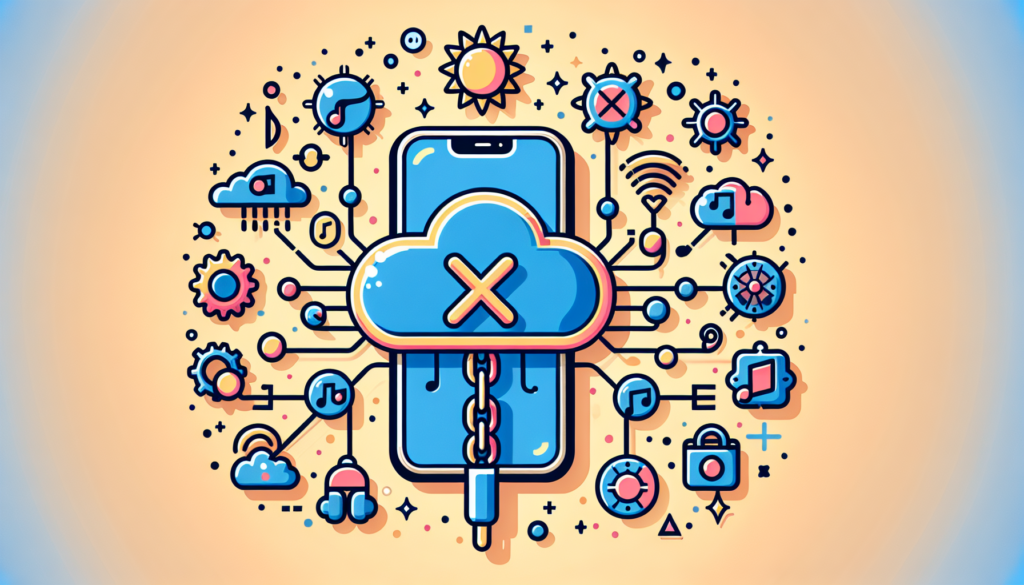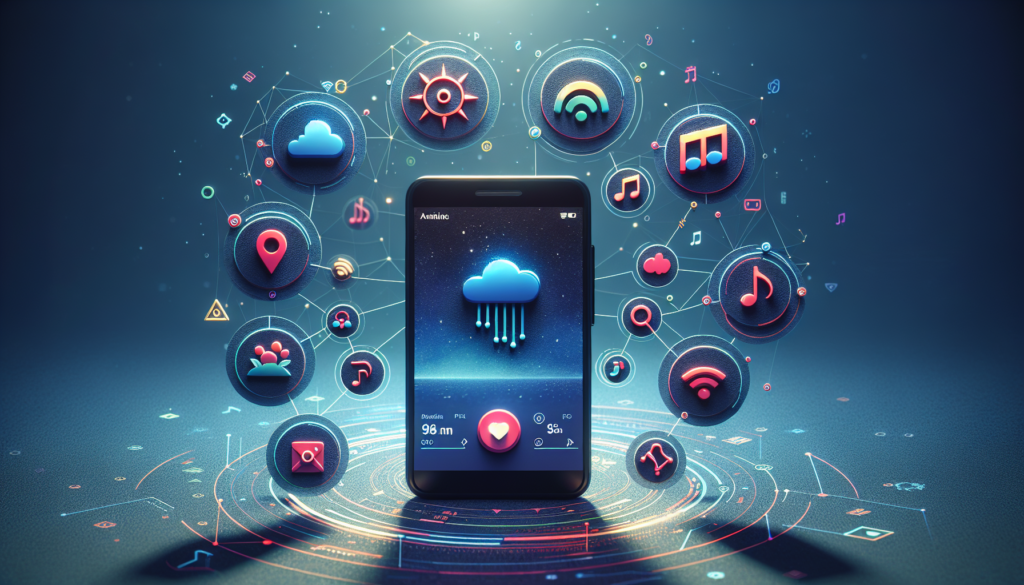Have you ever wondered if AI apps can still function without an internet connection? Well, the answer might surprise you. In this article, we will explore the realm of AI apps and delve into whether they have offline functionalities. Whether you’re a tech-savvy individual or simply curious about the capabilities of AI, join us as we uncover the truth behind AI apps and their ability to operate offline.

Offline Functionalities of AI Apps
Understanding Offline Functionality
Offline functionality refers to the ability of AI apps to perform certain tasks or provide certain features even when the device is not connected to the internet. While many AI apps rely on an internet connection to access data and carry out complex computations, offline functionality allows these apps to continue functioning in some capacity without internet access.
Importance of Offline Functionality in AI Apps
Offline functionality is crucial for AI apps for several reasons. Firstly, it ensures that users can still access important features and information even when they are in areas with limited or no internet connectivity. This is particularly important in remote locations or during travel, where internet access may be unreliable.
Secondly, offline functionality enhances user experience by minimizing disruptions caused by limited or no internet access. Users are able to continue using the app seamlessly, without having to worry about whether they are connected to the internet or not.
Lastly, offline functionality can also contribute to increased privacy and security. With offline capabilities, sensitive data and personal information can be processed and stored locally on the device, reducing the need to transmit data over the internet and potentially exposing it to security risks.
Challenges in Implementing Offline Functionality in AI Apps
Implementing offline functionality in AI apps comes with its own set of challenges. One major challenge is the need to store and synchronize data between the AI app and the device. AI apps often rely on vast amounts of data, and finding efficient ways to store and transfer this data in an offline environment can be complex.
Another challenge is ensuring that the app’s performance is not compromised when operating without internet access. AI algorithms and machine learning models often require significant computational power, which may be limited in offline scenarios. Balancing performance with offline capabilities is a key consideration.
Furthermore, offline functionality may require an initial online setup, where the app downloads necessary data or updates during an internet connection. This dependency on an initial online setup can pose a challenge in scenarios where the app is being used for the first time or after a long period of inactivity.
Types of AI Apps with Offline Functionality
Voice Assistants
Voice assistants like Siri, Google Assistant, and Amazon Alexa often have offline functionality to perform basic tasks such as setting alarms, answering questions, or playing music. These tasks can be performed without an active internet connection, ensuring that users can still interact with the voice assistant even in areas with limited connectivity.
Language Translation Apps
Language translation apps, such as Google Translate and Microsoft Translator, often include offline functionality. This allows users to translate text or even have conversations in different languages without an active internet connection. Offline language packs are downloaded to the device, enabling offline translation capabilities.
Image Recognition Apps
Image recognition apps, like Google Lens or Microsoft’s Seeing AI, can also incorporate offline functionality. With offline capabilities, these apps can recognize objects, landmarks, or text in images without relying on an internet connection. This can be particularly useful in situations where an internet connection is not available or when users want to preserve privacy by not transmitting images over the internet.

Benefits of Offline Functionality in AI Apps
Enhanced User Experience
One of the key benefits of offline functionality in AI apps is an enhanced user experience. By providing offline capabilities, users can continue to use the app seamlessly even when they are not connected to the internet. This ensures that they do not face interruptions or disruptions in their tasks, leading to a more satisfying user experience.
Increased Privacy and Security
Offline functionality can contribute to increased privacy and security in AI apps. With the ability to process and store sensitive data locally on the device, users can have peace of mind knowing that their information is not being transmitted over the internet. This reduces the risk of data breaches or unauthorized access to personal information.
Reduced Data Usage
Offline functionality in AI apps can also lead to reduced data usage. By allowing certain tasks to be performed offline, the app does not need to constantly access the internet to retrieve data or send requests. This can be particularly beneficial for users with limited data plans or those in areas with expensive or unreliable internet access.
Implementing Offline Functionality in AI Apps
Data Storage and Synchronization
One of the key aspects of implementing offline functionality in AI apps is efficient data storage and synchronization. AI apps often rely on large amounts of data, including machine learning models, language packs, or databases. Finding ways to store and update this data locally on the device, while keeping it in sync with any changes that occur when connected to the internet, is a crucial consideration.
On-Device Machine Learning
To enable offline functionality, AI apps can incorporate on-device machine learning capabilities. This involves training and deploying machine learning models directly on the user’s device, allowing the app to perform complex computations and make predictions offline. On-device machine learning reduces the reliance on a constant internet connection and enhances the app’s responsiveness.
Local AI Models
Another approach to implementing offline functionality is through the use of local AI models. Instead of relying on cloud-based models that require an internet connection, AI apps can utilize lightweight, pre-trained models that can be stored and executed locally on the device. These local AI models can provide offline capabilities for tasks such as image recognition or natural language processing.
Limitations of Offline Functionality in AI Apps
Limited Functionality and Performance
While offline functionality in AI apps provides certain capabilities without an internet connection, it is important to note that the functionality may be limited compared to when the app is connected to the internet. Some features or tasks may require real-time data updates or access to cloud-based services, which may not be possible in offline scenarios. Additionally, the performance of AI algorithms and models may be affected when operating offline due to limited computational resources on the device.
Data Size and Storage Constraints
Another limitation of offline functionality in AI apps is the challenge of managing data size and storage constraints. AI apps often deal with large amounts of data, and storing this data locally on the device can be problematic, especially in devices with limited storage capacity. Balancing the need for offline functionality with storage constraints becomes a critical consideration in the development of AI apps.
Dependency on Initial Online Setup
Offline functionality in AI apps may often depend on an initial online setup. This means that the app needs to download necessary data, language packs, or updates when it has internet connectivity to enable offline capabilities. This dependency on an initial online setup can be problematic in scenarios where the app is being used for the first time or when the user has not accessed the app for a long period of time.
Case Studies on AI Apps with Offline Functionality
Google Translate
Google Translate is a language translation app that incorporates offline functionality. The app allows users to download language packs, enabling them to translate text even when they are not connected to the internet. This offline capability is particularly useful for travelers or individuals in areas with limited connectivity, ensuring that language translation is still possible without relying on an internet connection.
Siri
Siri, Apple’s voice assistant, also includes offline functionality for certain tasks. Users can perform basic functions such as setting alarms, sending text messages, or playing music even without an active internet connection. By providing offline capabilities, Siri ensures that users can continue to interact and make use of the voice assistant’s features in various situations.
Microsoft Translator
Similar to Google Translate, Microsoft Translator allows users to download language packs for offline translation. This means that users can translate text or have conversations in different languages without relying on an internet connection. The app’s offline functionality enhances its usefulness and accessibility, particularly in regions with limited connectivity.
Future of Offline Functionality in AI Apps
Advancements in On-Device AI Processing
The future of offline functionality in AI apps is expected to see advancements in on-device AI processing capabilities. With improvements in hardware and computational power, devices will be able to run more complex AI algorithms and machine learning models locally. This will enable AI apps to offer offline functionality for a wider range of tasks, providing users with a more seamless and comprehensive experience.
Edge Computing for AI Apps
Edge computing, which involves processing data closer to the source or the device, is also expected to play a significant role in the future of offline functionality in AI apps. By leveraging edge computing technologies, AI apps can perform computations and make decisions locally on the device, reducing reliance on the cloud and enabling offline capabilities. This approach improves responsiveness and ensures that AI apps can function even in scenarios with limited or no internet connectivity.
Integration with IoT Devices
The integration of AI apps with IoT (Internet of Things) devices is another area that holds promise for offline functionality. By connecting AI-powered apps with IoT devices, data processing and analysis can be performed locally on the devices, without the need for constant internet access. This integration allows AI apps to leverage the capabilities of IoT devices, such as sensors or cameras, to provide offline functionality for tasks like home automation or environmental monitoring.
Conclusion
In conclusion, offline functionality is an essential component of AI apps, offering users the ability to continue using the app’s features and accessing information even without an internet connection. The importance of offline functionality lies in its ability to enhance user experience, increase privacy and security, and reduce data usage. Implementing offline functionality comes with challenges such as data storage and synchronization, performance limitations, and initial online setup dependencies. However, advancements in on-device AI processing, edge computing, and integration with IoT devices hold great potential for the future of offline functionality in AI apps. By addressing these challenges and leveraging these opportunities, AI developers can create AI apps that offer a comprehensive and seamless experience both online and offline.




